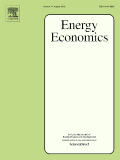
Only available in english.
Publication de l’article « Heat or power: How to increase the use of energy wood at the lowest cost?» par Vincent Bertrand, Sylvain Caurla, Philippe Delacote et Elodie Le Cadre dans la revue Energy Economics.
We compute the optimal subsidy level for fuelwood consumption that makes it possible to achieve the French biomass energy consumption target. For this purpose, we model the competition and trade-offs between the consumption of fuelwood for heat (FW-H) and the consumption of fuelwood for electricity (FW-E). To do so, we couple a forest sector model with an electricity simulation model, and we test different scenarios combining FW-H and FW-E that account for contrasting potential increases in the carbon price and the potential reduction in the number of nuclear plants. We assess the implications of these scenarios on (1) the budgetary costs for the government, (2) industrial wood producers’ profits, (3) cost savings in the power sector for the different scenarios tested, and (4) the carbon balance.
We show that the scenario with the highest carbon price and the lowest number of nuclear plants is the least expensive from a budgetary perspective. Indeed, when associated with a high carbon price, co-firing may increase FW-E demand with a lower subsidy level, which makes it possible to reduce the cost of reaching the target. However, in this case, FW-E crowds out part of FW-H, which may cause political and economic issues. From a carbon balance perspective, an FW-H-only scenario performs better than any other scenario that combines FW-H and FW-E due to the relatively low emissions factors of alternative technologies for electricity generation and, in particular, nuclear energy.
